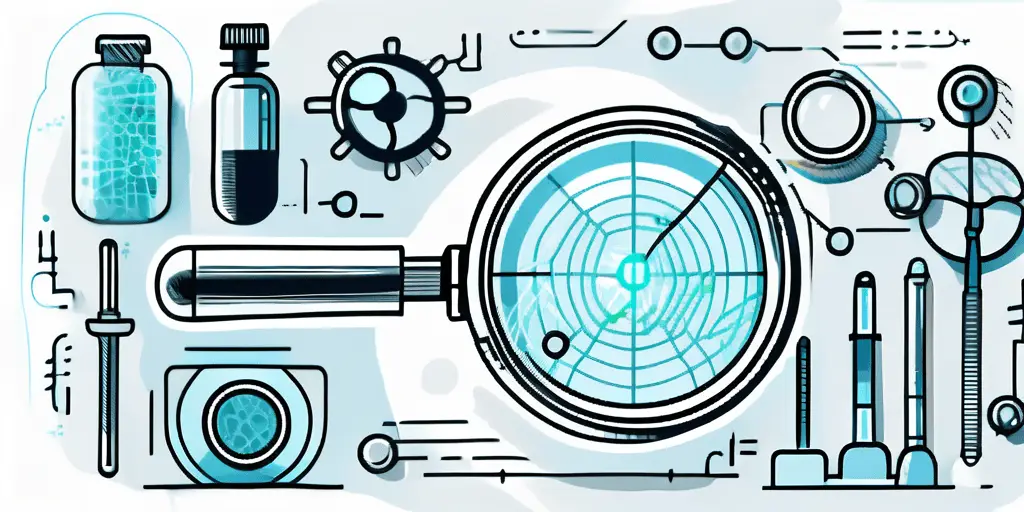In recent years, there has been an exponential increase in the use of medical devices. These devices play a crucial role in diagnosing and treating various medical conditions, making them an indispensable part of modern healthcare systems. However, with the growing reliance on technology, the security risks associated with these devices have become a cause for concern. Inadequate security measures can leave medical devices vulnerable to cyberattacks, potentially compromising patient safety and privacy. This is where the importance of in-depth attack surface analysis comes into play.
Understanding Attack Surface Analysis
Attack surface analysis refers to the process of identifying and evaluating the potential entry points that could be exploited by an attacker. It involves analyzing the software, hardware, and network components of a system to identify vulnerabilities and potential security risks. In the context of medical device testing, attack surface analysis is an essential step in ensuring the security and reliability of these devices.

Definition and Importance of Attack Surface Analysis
Attack surface analysis involves a comprehensive examination of the various components that make up a medical device system. By understanding the attack surface, security professionals can gain insights into potential vulnerabilities and develop effective strategies to mitigate them. Conducting in-depth attack surface analysis not only helps identify existing security flaws but also serves as a preventive measure against future attacks.
When conducting attack surface analysis, it is crucial to consider all possible entry points that an attacker might exploit. This includes examining the software code, network protocols, and even physical access points to the device. By leaving no stone unturned, security professionals can ensure that the device is fortified against potential threats.
The Role of Attack Surface Analysis in Medical Device Testing
Medical device testing is crucial to ensure the safety and effectiveness of these devices. While functional testing is essential, it is not sufficient to guarantee the security of medical devices. Attack surface analysis provides a holistic approach to identifying potential vulnerabilities and security risks. By conducting thorough analysis, medical device manufacturers can address these security concerns before the devices reach the market, ensuring patient safety.
During the attack surface analysis process, security professionals simulate various attack scenarios to assess the device’s resilience. This includes attempting to exploit known vulnerabilities, testing the device’s response to unexpected inputs, and evaluating its resistance to denial-of-service attacks. By subjecting the device to rigorous testing, manufacturers can identify and rectify any weaknesses, ensuring that the device can withstand real-world threats.
Furthermore, attack surface analysis plays a vital role in compliance with regulatory standards in the medical device industry. Regulatory bodies, such as the Food and Drug Administration (FDA), require manufacturers to demonstrate that their devices meet certain security standards. By conducting thorough attack surface analysis, manufacturers can provide evidence of their device’s security measures, facilitating the regulatory approval process.
The Vulnerabilities of Medical Devices
Medical devices are not immune to security threats. In fact, they can be an attractive target for hackers due to the sensitive nature of the data they handle and their potential impact on patient health. Understanding the vulnerabilities of medical devices is crucial in designing effective security measures.

One important aspect to consider when discussing the vulnerabilities of medical devices is the increasing trend towards interconnected healthcare systems. With the rise of the Internet of Things (IoT) in the medical field, the attack surface for potential security breaches has expanded significantly. This interconnectedness brings convenience and efficiency to healthcare delivery but also introduces new risks that must be addressed.
Common Security Risks in Medical Devices
Medical devices often rely on complex software and network connectivity, making them vulnerable to various security risks. Common security risks include inadequate authentication and authorization mechanisms, unencrypted communication channels, outdated software, and insecure access points. These vulnerabilities can be exploited by attackers to gain unauthorized access, manipulate data, or disrupt device functionality.
Moreover, the lack of standardized security protocols across different types of medical devices poses a challenge for ensuring comprehensive protection. Manufacturers, healthcare providers, and regulatory bodies need to work together to establish industry-wide security standards and best practices to mitigate these risks effectively.
The Consequences of Inadequate Security Measures
The consequences of inadequate security measures for medical devices can be severe. In some instances, successful attacks on medical devices have led to patient harm and even fatalities. For example, in 2015, a vulnerability in a widely-used drug infusion pump allowed hackers to remotely control the dosage of medication, potentially endangering patient lives. Such incidents highlight the urgent need for robust security measures, including in-depth attack surface analysis.
Furthermore, the financial implications of security breaches in medical devices can be significant. Beyond the immediate costs of addressing a breach and potential legal liabilities, healthcare organizations may also face reputational damage that can impact patient trust and loyalty. Investing in cybersecurity measures is not only a matter of regulatory compliance but also a crucial component of maintaining the integrity and reliability of medical services.
The Process of In-Depth Attack Surface Analysis
Conducting in-depth attack surface analysis requires a systematic approach to identify and evaluate potential vulnerabilities. This process involves multiple steps and the use of specialized tools and techniques.
When it comes to analyzing the attack surface of a medical device system, meticulous attention to detail is crucial. The consequences of overlooking even the tiniest vulnerability can be catastrophic. Therefore, let’s delve deeper into the key steps involved in conducting a comprehensive attack surface analysis.
Key Steps in Conducting Attack Surface Analysis
- Identify all components: The first step in conducting attack surface analysis is to identify all the components that make up the medical device system. This includes software, hardware, and network components. Each component must be thoroughly examined to ensure no stone is left unturned in the pursuit of security.
- Evaluate potential vulnerabilities: Once the components are identified, a thorough evaluation of each component’s potential vulnerabilities should be conducted. This goes beyond a mere surface-level assessment. It involves delving into the intricate details of the system, conducting penetration testing, code review, and vulnerability scanning. This meticulous approach helps uncover vulnerabilities that may have otherwise gone unnoticed.
- Assess security controls: The next step is to assess the effectiveness of existing security controls in place. This includes evaluating authentication mechanisms, encryption protocols, and access controls. It is crucial to ensure that these security measures are robust enough to withstand potential attacks and safeguard the integrity of the medical device system.
- Develop mitigation strategies: Based on the identified vulnerabilities and weaknesses, strategies should be developed to mitigate these risks. This may involve implementing patches, updating software, and enhancing security measures. The goal is to create a fortified defense system that can withstand even the most sophisticated attacks.
- Regularly monitor and update: Attack surface analysis is an ongoing process. It is essential to regularly monitor and update security measures to stay ahead of emerging threats. This includes keeping up with the latest security patches, staying informed about new attack vectors, and continuously enhancing the system’s defenses.
Now that we have explored the key steps involved in conducting attack surface analysis, let’s take a closer look at the tools and techniques that can facilitate this process.
Tools and Techniques for Effective Analysis
Various tools and techniques can facilitate the process of attack surface analysis. Vulnerability scanners, penetration testing tools, and threat modeling techniques are commonly used in analyzing the attack surface. These tools help identify weaknesses and provide insights into potential security risks.
Vulnerability scanners play a vital role in automating the process of identifying vulnerabilities within the system. These tools scan the system for known vulnerabilities, misconfigurations, and weak points, providing a comprehensive report that highlights areas of concern.
Penetration testing tools, on the other hand, simulate real-world attacks to evaluate the system’s resilience. By attempting to exploit vulnerabilities in a controlled environment, these tools provide valuable insights into the system’s weaknesses and help prioritize mitigation efforts.
Threat modeling techniques, such as creating attack trees or conducting misuse case analysis, help identify potential attack vectors and prioritize the most critical threats. These techniques enable a more proactive approach to security by identifying vulnerabilities before they can be exploited.
By leveraging these tools and techniques, organizations can conduct a thorough and effective attack surface analysis, ensuring the robustness of their medical device systems and safeguarding the well-being of patients and healthcare providers.
The Impact of Comprehensive Attack Surface Analysis
Conducting comprehensive attack surface analysis can have a profound impact on medical device security.

Medical devices play a critical role in modern healthcare, providing essential functions that directly impact patient care and treatment outcomes. However, the increasing connectivity of these devices also exposes them to cybersecurity threats. Comprehensive attack surface analysis goes beyond traditional security measures to identify potential vulnerabilities that could be exploited by malicious actors.
Enhancing Medical Device Security through Analysis
By identifying potential vulnerabilities and implementing targeted mitigation strategies, attack surface analysis significantly enhances the security of medical devices. This, in turn, contributes to the overall safety and well-being of patients.
Moreover, the insights gained from attack surface analysis can inform the development of future medical devices, leading to the integration of security features at the design stage. This proactive approach helps preemptively address potential security risks and strengthens the overall resilience of medical device ecosystems.
The Role of Analysis in Regulatory Compliance
Regulatory bodies worldwide are increasingly recognizing the importance of robust security measures for medical devices. Through attack surface analysis, medical device manufacturers can demonstrate compliance with regulatory standards and requirements. This not only inspires trust among healthcare providers and patients but also helps prevent potential legal issues and financial consequences.
Furthermore, regulatory compliance goes beyond meeting minimum security requirements; it underscores a commitment to patient safety and data protection. Attack surface analysis serves as a proactive tool for ensuring ongoing compliance with evolving regulatory frameworks, fostering a culture of continuous improvement and accountability within the medical device industry.
Future Perspectives on Attack Surface Analysis in Medical Device Testing
As technology continues to advance, the landscape of medical device security is constantly evolving. Attack surface analysis will continue to play a vital role in ensuring the security and integrity of medical devices.
Emerging Trends in Medical Device Security
With the increasing adoption of internet-connected devices in healthcare, the attack surface for medical devices is expanding. Emerging trends such as artificial intelligence and the Internet of Things (IoT) bring new security challenges that need to be addressed. Attack surface analysis will be instrumental in identifying and mitigating these evolving threats.
One of the emerging trends in medical device security is the integration of artificial intelligence (AI) capabilities. AI-powered medical devices have the potential to revolutionize healthcare by providing personalized treatment plans and real-time monitoring. However, with this increased connectivity and reliance on AI, the attack surface for these devices also expands. Attack surface analysis becomes crucial in identifying potential vulnerabilities in AI algorithms and ensuring the security of patient data.
The Evolving Role of Attack Surface Analysis in Healthcare Security
Attack surface analysis is not a one-time process. It needs to be integrated into the entire lifecycle of medical devices, from design and development to post-market surveillance. As the healthcare industry continues to prioritize patient safety and data privacy, attack surface analysis will become a fundamental aspect of healthcare security.
Another aspect that highlights the evolving role of attack surface analysis in healthcare security is the increasing use of telemedicine. Telemedicine allows patients to receive medical care remotely, which has become especially important during the COVID-19 pandemic. However, the use of telemedicine introduces new attack vectors and potential vulnerabilities. Attack surface analysis can help identify and address these risks, ensuring the secure and reliable delivery of healthcare services.
In conclusion, in-depth attack surface analysis is a crucial step in ensuring the security of medical devices. By identifying vulnerabilities and implementing effective mitigation strategies, manufacturers can safeguard patients’ well-being and protect sensitive medical data. As the medical device landscape continues to evolve, the importance of attack surface analysis will only increase. Embracing this practice will not only ensure compliance with regulatory standards but also foster trust among healthcare providers and patients alike.
As the medical device industry continues to advance, the need for robust cybersecurity measures becomes ever more critical. At Blue Goat Cyber, we understand the complexities of medical device cybersecurity and are dedicated to providing top-tier B2B cybersecurity services. Our expertise in penetration testing, HIPAA and FDA compliance, and a range of other cybersecurity solutions ensures that your medical devices are protected against the ever-evolving threat landscape. As a Veteran-Owned business, we’re committed to securing your operations with the highest standards of excellence. Contact us today for cybersecurity help and partner with a team that’s as passionate about your security as you are about healthcare.


